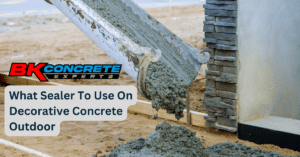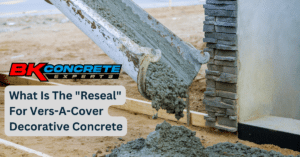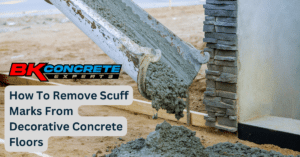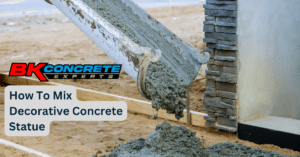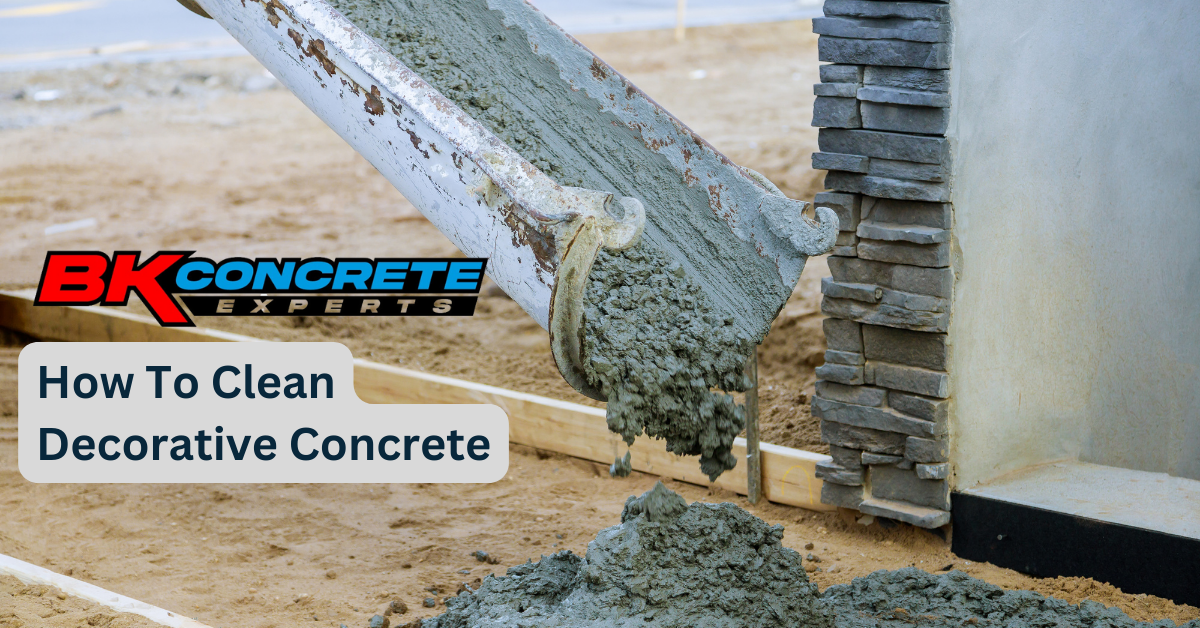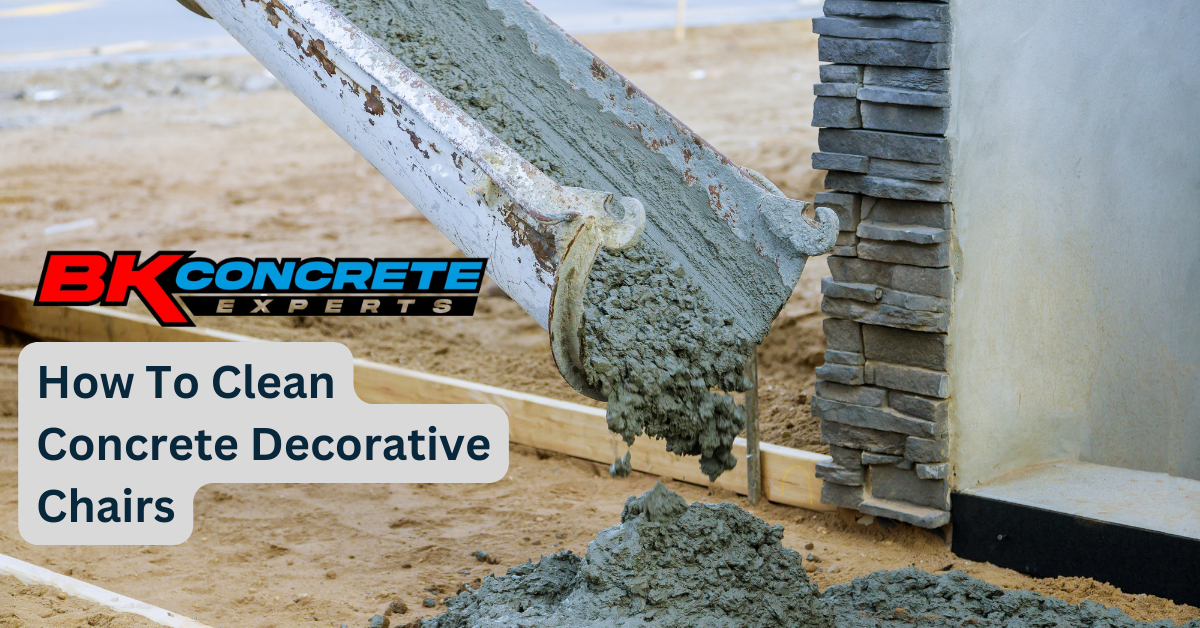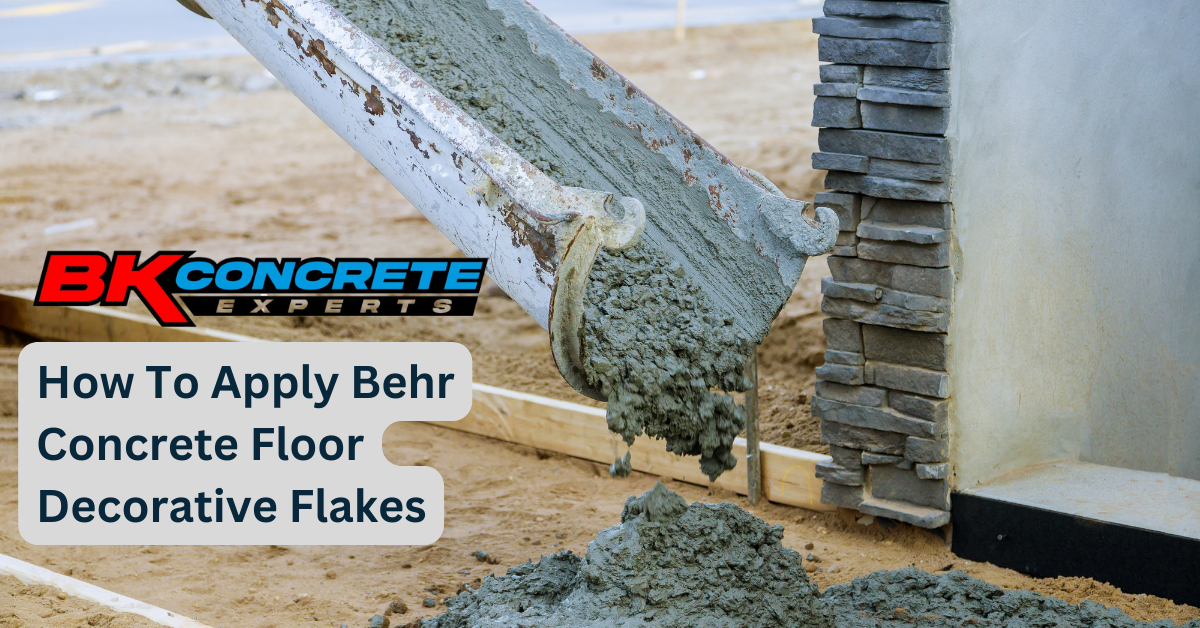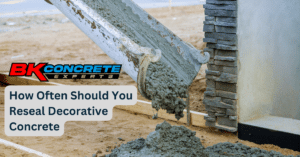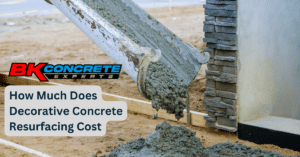Decorative concrete floors are a popular choice among homeowners and business owners alike due to their durability, versatility, and aesthetic appeal. With their unique patterns and designs, they can add a touch of elegance and sophistication to any space.
However, like any other type of flooring, decorative concrete floors require regular cleaning and maintenance to keep them looking their best. Cleaning decorative concrete floors may seem like a daunting task, but with the right tools and techniques, it can be a breeze.
In this article, we will discuss the best practices for cleaning and maintaining decorative concrete floors. From sweeping and mopping techniques to choosing the right cleaning products, we’ll cover everything you need to know to keep your floors looking as good as new.
So, let’s dive in and discover the secrets to cleaning and maintaining beautiful decorative concrete floors.
Regular Cleaning and Maintenance Tips
To maintain the pristine appearance of decorative concrete floors, it is recommended to regularly clean the surface using a soft-bristled broom or a dust mop, which effectively removes dirt and debris without causing any scratches or damage to the surface. This is an important aspect of maintaining the aesthetic appeal of decorative concrete floors.
Regular cleaning ensures that the floor remains clean and free of debris, which can cause wear and tear to the surface over time.
In addition to using a soft-bristled broom or a dust mop, it is also recommended to use a pH-neutral cleaner for regular cleaning. This type of cleaner is gentle on the surface and does not cause any damage or discoloration. It is important to avoid using harsh chemicals or abrasive cleaners, as these can cause damage to the surface and ruin the aesthetic appeal of the decorative concrete floor.
Another important aspect of regular cleaning and maintenance is to address spills and stains immediately. This prevents the stain from setting into the surface and causing discoloration or damage. A pH-neutral cleaner and a soft-bristled brush can effectively clean most stains and spills without causing any damage to the surface.
By following these regular cleaning and maintenance tips, decorative concrete floors can retain their pristine appearance and remain a beautiful addition to any space.
Sweeping and Vacuuming Techniques
Efficient removal of debris and dust particles from the surface of polished cementitious substrates requires the use of appropriate sweeping and vacuuming techniques. This is because decorative concrete floors require regular cleaning and maintenance to preserve their aesthetic appeal and prevent damage. Sweeping and vacuuming are two essential cleaning techniques that help to remove dirt, dust, and other debris from the surface of the floor.
Sweeping is the first step in cleaning decorative concrete floors. This process involves using a soft-bristled broom to remove any loose particles that may be present on the surface. The broom should be swept gently across the floor, ensuring that the bristles do not scratch or damage the surface. It is recommended to sweep the floor in the direction of the surface texture to remove all dirt and debris effectively.
Vacuuming is another effective cleaning technique that helps to remove dust and dirt particles from decorative concrete floors. A vacuum cleaner equipped with a HEPA filter is the best option for this task because it can capture even the smallest particles without releasing them back into the air. The vacuum cleaner should be set to the lowest suction setting to prevent any damage to the floor. It is advisable to vacuum the floor at least twice a week to prevent the accumulation of dirt and debris, which can cause damage to the surface over time.
Sweeping and vacuuming are essential techniques for maintaining the cleanliness and appearance of decorative concrete floors. These techniques should be performed regularly to prevent the accumulation of dirt and debris, which can cause damage to the surface. Proper sweeping and vacuuming techniques can help to prolong the lifespan of decorative concrete floors and keep them looking beautiful for years to come.
Mopping Dos and Don’ts
Proper mopping techniques are crucial for maintaining the durability and appearance of polished cementitious substrates. Decorative concrete floors require frequent cleaning to maintain their sheen and longevity. While mopping may seem like a straightforward task, it is important to keep a few dos and don’ts in mind to avoid damaging the surface.
Firstly, it is essential to choose the right type of mop. Microfiber mops are recommended for decorative concrete floors as they are gentle on the surface and do not leave behind any residue. Additionally, using a clean mop head is imperative to prevent any dirt or debris from scratching the surface. A dirty mop can also cause streaks and smudges, which can be difficult to remove.
Secondly, it is crucial to use the right cleaning solution. Avoid using acidic or abrasive cleaners, which can damage the surface. Instead, opt for a pH-neutral cleaner specifically designed for polished concrete floors. These cleaners are gentle on the surface and do not leave any residue. It is also important to follow the manufacturer’s instructions and dilute the cleaner properly to avoid any damage.
It is essential to use the correct mopping technique. Start by sweeping or vacuuming the floor to remove any loose dirt or debris. Then, dampen the mop with the cleaning solution and wring out excess water. Avoid leaving any standing water on the surface as it can cause water spots. Instead, use a dry mop or towel to remove any excess water.
Following these steps will ensure that your decorative concrete floors remain clean and beautiful for years to come.
Choosing the Right Cleaning Products and Tools
Selecting appropriate cleaning materials and equipment is crucial for maintaining the durability and appearance of polished cementitious substrates. Decorative concrete floors require special care and attention to extend their life span.
Choosing the right cleaning products and tools is essential to prevent damage to the concrete surface and ensure a clean and polished floor.
When selecting cleaning products for decorative concrete floors, it is essential to choose those that are specifically designed for polished concrete surfaces. Acidic or alkaline products can damage the concrete surface and cause etching or discoloration. Neutral pH cleaners are the safest option, as they do not contain harsh chemicals that can harm the surface. Additionally, it is important to avoid abrasive cleaning tools that can scratch the surface and dull the shine of the floor. Soft-bristled brushes or microfiber mops are ideal for cleaning polished concrete floors.
For tough stains or spills, it is advisable to use specialized cleaning products that are formulated to remove specific types of stains, such as oil, grease, or wine. Always follow the manufacturer’s instructions when using cleaning products to prevent damage to the surface. It is also important to rinse the floor thoroughly after cleaning to remove any residue left behind by the cleaning solution.
By using the right cleaning products and tools, you can maintain the beauty and longevity of your decorative concrete floors.
Preventing Damage to Decorative Concrete Floors
To maintain the longevity and appearance of polished cementitious substrates, it is crucial to take necessary precautions to prevent any potential damage.
One simple but effective way to protect decorative concrete floors is by placing mats or rugs in high-traffic areas. This will prevent dirt, debris, and other abrasive materials from scratching or dulling the surface.
It is also important to avoid using harsh cleaning chemicals or abrasive tools, such as steel wool or scrub brushes, as these can cause permanent damage to the floor’s finish.
Another key factor in preventing damage to decorative concrete floors is proper maintenance. Regular cleaning and maintenance will not only keep the floor looking its best, but it will also help to prevent any long-term damage.
This includes sweeping or vacuuming the floor regularly to remove any dirt or debris, and mopping with a neutral pH cleaner to remove any stains or spills. It is also important to address any spills or stains as soon as possible, as they can become more difficult to remove over time.
It is important to be mindful of any heavy or sharp objects that may come into contact with the floor. Furniture legs, high heels, and even small rocks or pebbles can all cause damage to the surface.
To prevent this, it is recommended to use furniture pads or coasters to protect the floor from scratches and dents. By taking these simple precautions, decorative concrete floors can maintain their beauty and durability for years to come.
Frequently Asked Questions
Can I use a pressure washer on my decorative concrete floors?
Using a pressure washer on decorative concrete floors can be risky as it may cause damage to the surface if not done properly. The high-pressure water stream can dislodge the decorative aggregates and etch the surface, leaving it rough and uneven.
However, if you must use a pressure washer, it is recommended to use a lower pressure setting, typically below 3000 psi, and a wider spray angle to avoid damaging the surface. Additionally, it is important to test a small inconspicuous area first to ensure that the pressure and spray angle are appropriate for the surface.
Alternatively, a safer and more effective method of cleaning decorative concrete floors is to use a specialized cleaner and a soft-bristled brush or a floor scrubber. This method ensures that the surface is cleaned thoroughly without causing any damage or discoloration.
How often should I seal my decorative concrete floors?
The frequency at which one should seal their decorative concrete floors depends on various factors such as the amount of traffic, exposure to elements, and the type of sealer used.
For instance, a high traffic area may require resealing every 1-2 years, while a low traffic area may only need to be resealed every 3-4 years.
A case study of a commercial space with decorative concrete floors showed that they needed to be resealed every 18-24 months due to heavy foot traffic.
It is recommended to consult with a professional to determine the appropriate frequency for sealing one’s decorative concrete floors.
When sealing, it is essential to follow the manufacturer’s instructions and use a quality sealer to ensure maximum protection and longevity of the floors.
What should I do if my decorative concrete floors become stained?
If your decorative concrete floors become stained, there are several steps you can take to remove the stains.
The first step is to identify the type of stain, as different stains require different cleaning methods. For example, oil-based stains can be removed with a degreaser, while rust stains can be treated with a solution of oxalic acid.
It is important to clean up spills as soon as possible, as the longer a stain sits, the harder it will be to remove.
In addition to traditional cleaning methods, such as scrubbing with a brush or using a pressure washer, there are also specialized products available specifically for cleaning decorative concrete floors.
As always, it is important to follow the manufacturer’s instructions when using these products.
Can I use bleach or other harsh chemicals to clean my decorative concrete floors?
Bleach and other harsh chemicals can be effective at cleaning decorative concrete floors, but they can also cause damage if not used properly.
It is important to follow the manufacturer’s instructions and dilute the chemical as necessary.
Additionally, using a neutral pH cleaner specifically designed for decorative concrete is recommended to avoid any potential discoloration or etching.
It is also important to avoid using abrasive tools or scrubbers, as they can scratch the surface of the concrete.
Regular maintenance and cleaning, using appropriate cleaning methods and products, can help keep your decorative concrete floors looking great for years to come.
What is the best way to remove stubborn dirt or grime from my decorative concrete floors?
The best way to remove stubborn dirt or grime from decorative concrete floors is by first sweeping or vacuuming the surface to remove loose debris.
Then, a pH-neutral cleaner specifically designed for use on polished concrete should be used. It is important to avoid using harsh chemicals, such as bleach or ammonia, as they can damage the surface of the concrete.
A soft-bristled brush or microfiber mop can be used to gently scrub the cleaner into the surface, and then rinsed thoroughly with clean water.
For particularly stubborn stains, a poultice made from a mixture of baking soda and water can be applied to the affected area and left to sit overnight before being rinsed off.
It is important to regularly clean and maintain decorative concrete floors to prevent the buildup of dirt and grime, which can ultimately damage the surface and compromise its appearance.
Conclusion
Decorative concrete floors are a popular choice for commercial and residential settings because of their durability and aesthetic appeal. However, to maintain their appearance and longevity, proper cleaning and maintenance is crucial. Regular sweeping or vacuuming can ensure that dirt and debris do not accumulate on the surface, preventing scratches and damage.
When mopping, it is important to use a pH-neutral cleaner and avoid harsh chemicals that can cause discoloration or etching. Additionally, choosing the right cleaning tools, such as microfiber mops or soft-bristled brushes, can prevent scratches and other forms of damage to the surface.
To prevent damage to decorative concrete floors, it is important to avoid using abrasive materials or tools, such as wire brushes or steel wool. Spills and stains should be promptly cleaned up to prevent staining or discoloration.
With proper cleaning and maintenance, decorative concrete floors can maintain their beauty and durability for years to come.
In conclusion, maintaining decorative concrete floors requires attention to detail and the use of appropriate cleaning techniques and tools. As the saying goes, ‘an ounce of prevention is worth a pound of cure.’ Regular cleaning and maintenance can prevent costly repairs and ensure the longevity of these beautiful and functional surfaces. By following the tips outlined in this article, you can keep your decorative concrete floors looking their best for years to come.



